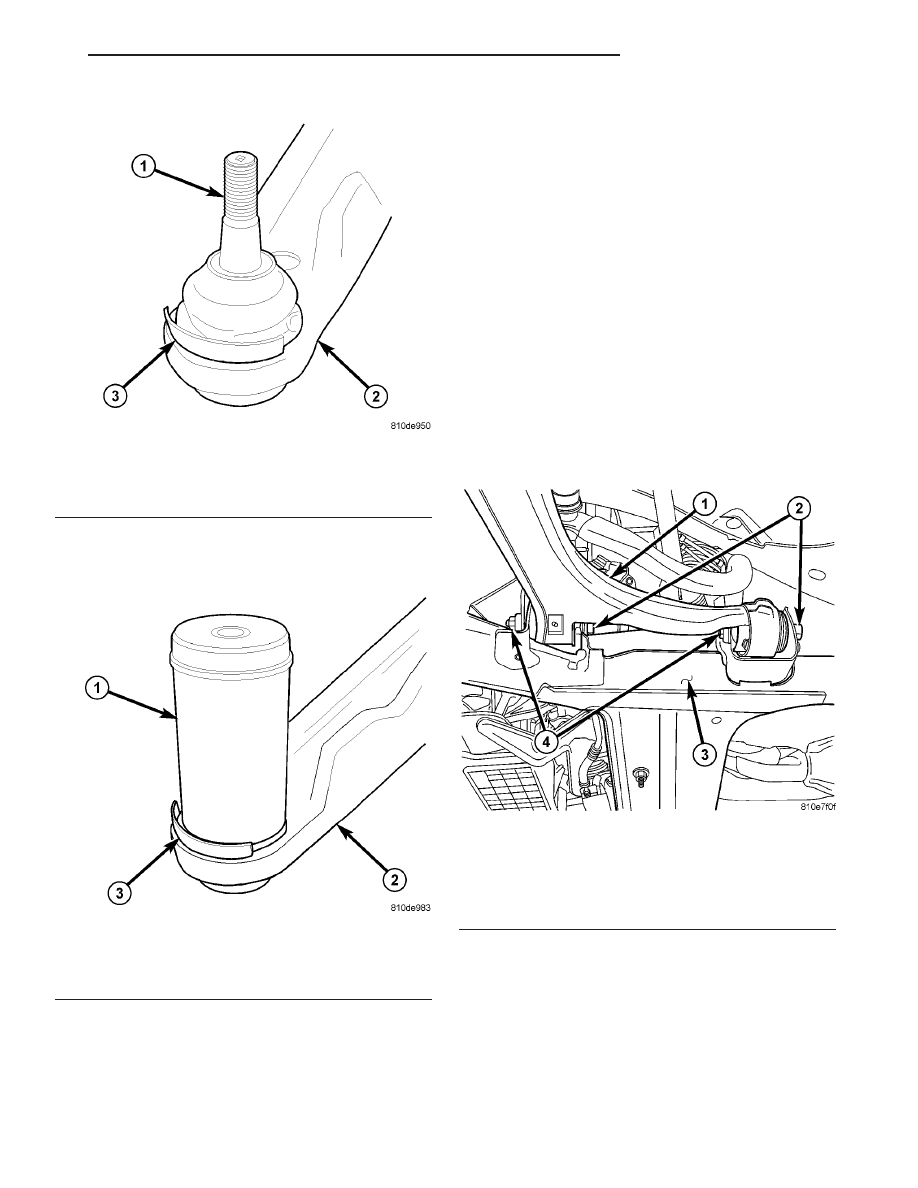Chrysler Pacifica. Manual - part 423

tap with a hammer if necessary) to top of Installer
until seal boot is pressed squarely down against top
surface of lower control arm.
(4) Wipe any grease off ball joint stem using a
clean shop towel with Mopar
t Brake Parts Cleaner
applied to it.
CAUTION: Do not attempt to install a normal grease
zirc in ball joint in an effort to lubricate joint
through zirc fitting.
(5) Install steering knuckle on vehicle. (Refer to 2 -
SUSPENSION/FRONT/KNUCKLE
-
INSTALLA-
TION)
LOWER CONTROL ARM
REMOVAL
(1) Raise and support vehicle. (Refer to LUBRICA-
TION & MAINTENANCE/HOISTING - STANDARD
PROCEDURE)
(2) Remove wheel and tire assembly.
(3) Remove steering knuckle. (Refer to 2 - SUS-
PENSION/FRONT/KNUCKLE - REMOVAL)
(4) Remove bolts and nuts (with flags if equipped)
attaching lower control arm to engine cradle (Fig.
17).
(5) Remove lower control arm.
INSPECTION
Inspect lower control arm for signs of damage from
contact with the ground or road debris. If lower con-
trol arm shows any sign of damage, inspect lower
control arm for distortion. Do not attempt to repair
or straighten a broken or bent lower control arm. If
damaged, the lower control arm is serviced only as a
complete assembly.
Fig. 15 Ball Joint Seal Boot Installed Position
1 - BALL JOINT STUD
2 - LOWER CONTROL ARM
3 - SEAL BOOT SHIELD
Fig. 16 Installer Positioned On Ball Joint Seal Boot
1 - INSTALLER 6758
2 - LOWER CONTROL ARM
3 - SEAL BOOT SHIELD
Fig. 17 Control Arm Mounting Bolts At Engine
Cradle
1 - LOWER CONTROL ARM
2 - MOUNTING BOLTS
3 - ENGINE CRADLE
4 - FLAG NUTS
CS
FRONT SUSPENSION
2 - 9
LOWER BALL JOINT SEAL BOOT (Continued)